标签:test 数据加载 使用 load img es2017 add country 创建

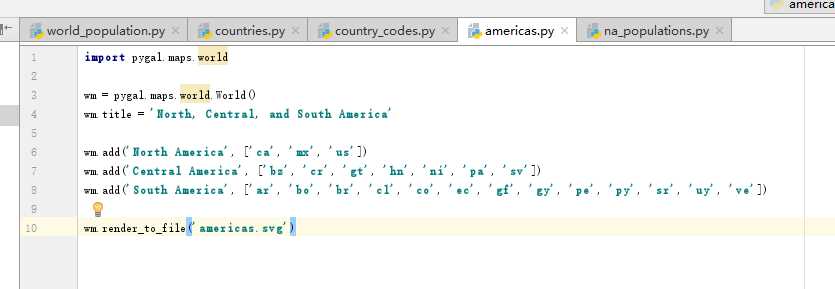
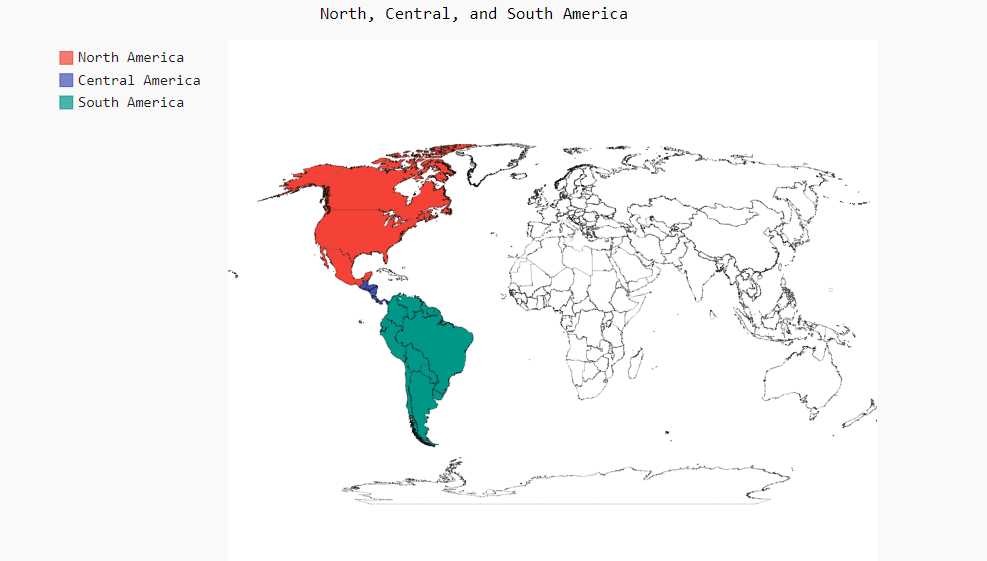

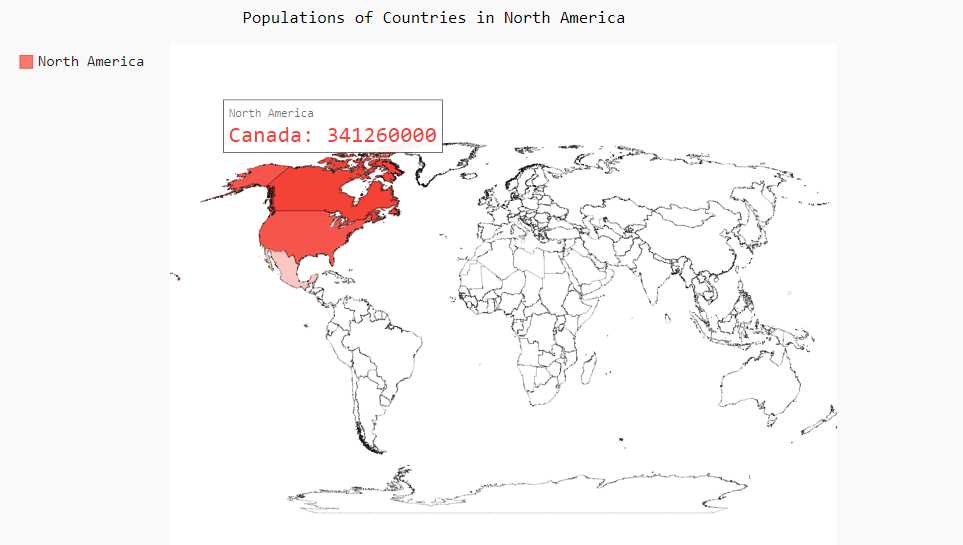
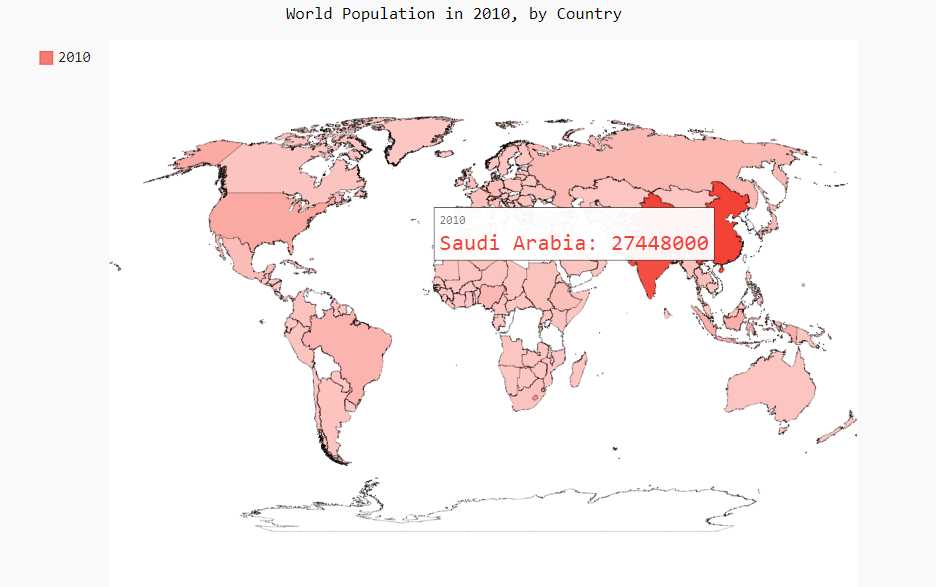
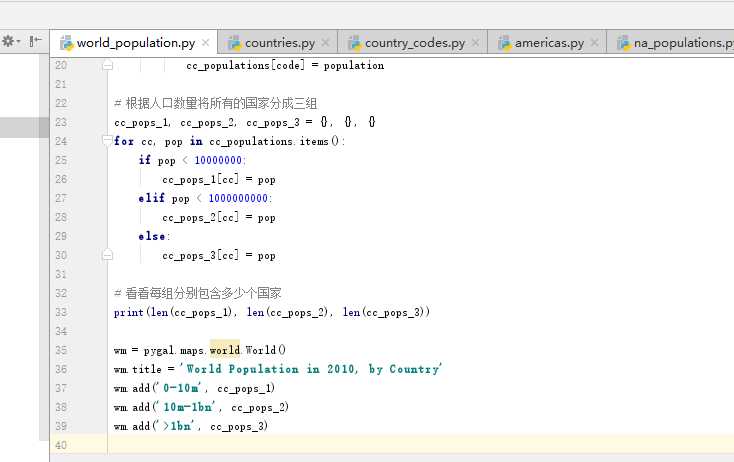
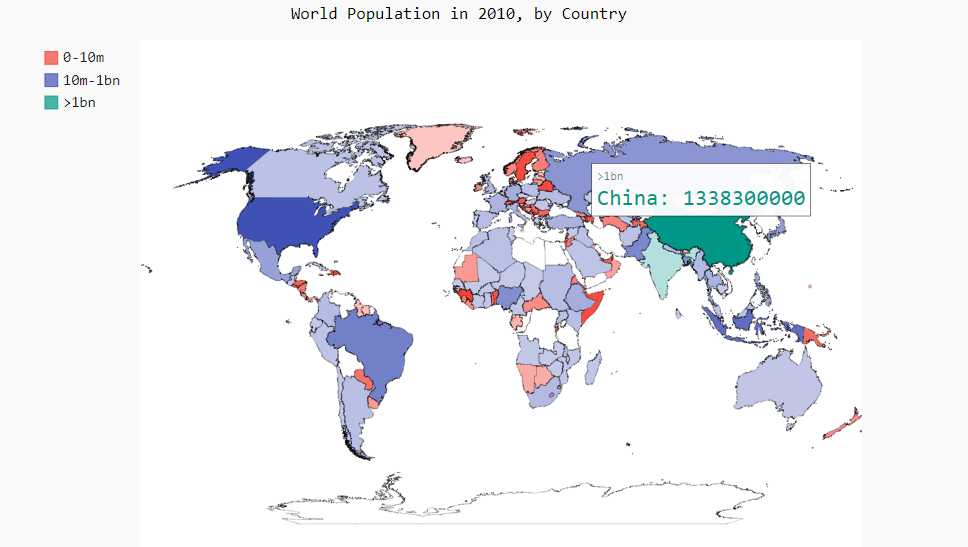
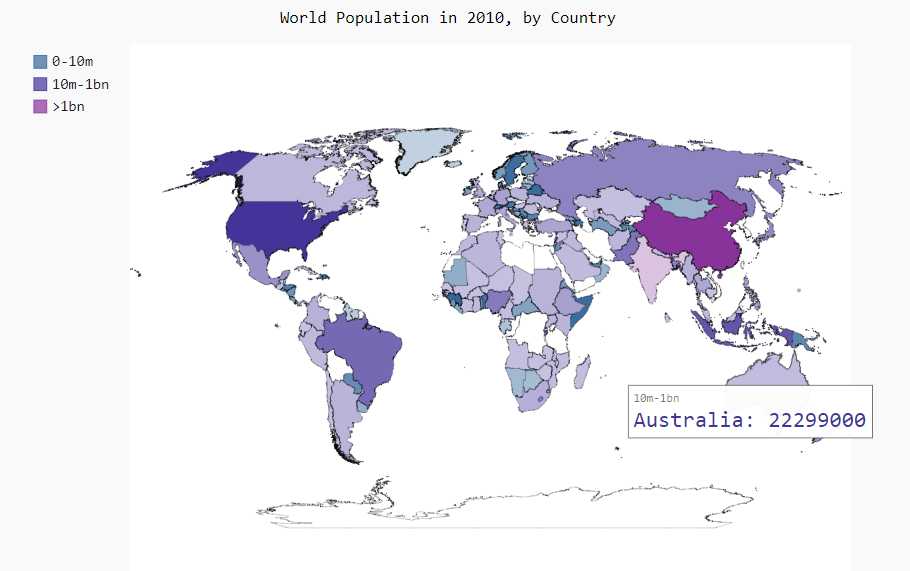
world_population.py:
import json
import pygal.maps.world
from pygal.style import RotateStyle
from country_codes import get_country_code
# 将数据加载到一个列表中
filename = ‘population_data.json‘
with open(filename) as f:
pop_data = json.load(f)
# 创建一个包含人口数量的字典
cc_populations = {}
for pop_dict in pop_data:
if pop_dict[‘Year‘] == ‘2010‘:
country_name = pop_dict[‘Country Name‘]
population = int(float(pop_dict[‘Value‘]))
code = get_country_code(country_name)
if code:
cc_populations[code] = population
# 根据人口数量将所有的国家分成三组
cc_pops_1, cc_pops_2, cc_pops_3 = {}, {}, {}
for cc, pop in cc_populations.items():
if pop < 10000000:
cc_pops_1[cc] = pop
elif pop < 1000000000:
cc_pops_2[cc] = pop
else:
cc_pops_3[cc] = pop
wm_style = RotateStyle(‘#336699‘)
wm = pygal.maps.world.World(style=wm_style)
wm.title = ‘World Population in 2010, by Country‘
wm.add(‘0-10m‘, cc_pops_1)
wm.add(‘10m-1bn‘, cc_pops_2)
wm.add(‘>1bn‘, cc_pops_3)
wm.render_to_file(‘world_population.svg‘)
countries.py:
from pygal_maps_world.i18n import COUNTRIES
for country_code in sorted(COUNTRIES.keys()):
print(country_code, COUNTRIES[country_code])
country_codes.py:
from pygal_maps_world.i18n import COUNTRIES
def get_country_code(country_name):
"""根据指定的国家,返回Pygal使用的两个字母的国别码"""
for code, name in COUNTRIES.items():
if name == country_name:
return code
# 如果没有找到指定的国家,就返回None
return None
标签:test 数据加载 使用 load img es2017 add country 创建
原文地址:http://www.cnblogs.com/silverbulletcy/p/7990113.html